Have you ever thought about creating a beautiful garden right in your own backyard? Making a backyard garden is not only a rewarding DIY project, but it also brings a sense of joy and satisfaction as you watch your plants grow and flourish. Whether you have a small space or a large yard, you can create a garden that suits your needs and brings beauty to your outdoor space. In this step-by-step guide, I will walk you through the process of making a backyard garden and provide you with valuable tips and advice along the way.
Key Takeaways:
- Creating a backyard garden can bring a sense of joy and fulfillment.
- Regardless of the size of your space, you can create a garden that suits your needs.
- This step-by-step guide will provide valuable tips and advice for making a successful backyard garden.
Now, let’s dive into the first step of creating your own backyard garden: selecting the proper location!
Selecting a Vegetable Garden Location
When starting a backyard garden, it is crucial to select the proper location that will provide optimal sunlight and access to water. The success of your vegetable garden depends heavily on the amount of sunlight it receives, as plants require sunlight for photosynthesis, which is essential for their growth and development. Additionally, easy access to water is important to ensure that your plants stay hydrated.
Before choosing a location for your vegetable garden, take a moment to observe your yard and identify areas that receive the most sunlight throughout the day. Pay attention to any potential obstructions like trees or buildings that may cast shadows over the garden. Aim for a spot that gets at least six to eight hours of direct sunlight daily, as this will promote healthy plant growth and higher yields.
In addition to sunlight, consider the proximity of a water source to your chosen location. Having easy access to water will make it more convenient for you to regularly irrigate your garden, especially during dry spells or hot summer days when plants require more water. If possible, choose a location that is within reach of a hose or sprinkler system. If a water source is not readily available, consider installing a rain barrel or using a long hose to reach the garden area.
It is also important to consider the size and layout of your yard when selecting a location for your vegetable garden. Assess the available space and choose an area that is large enough to accommodate the number of plants you plan to grow. Keep in mind that some plants may require more space than others, so plan accordingly to prevent overcrowding.
Lastly, consider the existing soil conditions in the area you have chosen. Conduct a soil test to determine the pH level and nutrient content of the soil. This will help you identify any deficiencies or imbalances that may need to be addressed before planting. Based on the results of the soil test, you may need to amend the soil by adding organic matter, such as compost or aged manure, to improve its fertility and structure.
Key Points:
- Choose a location that receives at least six to eight hours of direct sunlight daily for optimal plant growth
- Ensure easy access to a water source for convenient irrigation
- Consider the size and layout of your yard when selecting a location
- Conduct a soil test to assess the existing soil conditions and make any necessary amendments
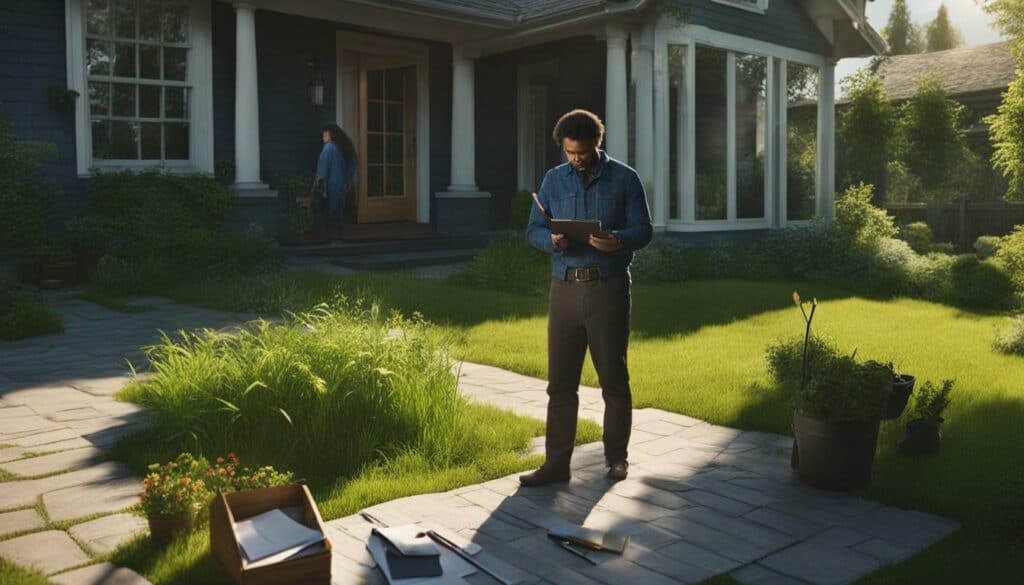
“When starting a backyard garden, it is crucial to select the proper location that will provide optimal sunlight and access to water.”
Planning the Size of Your Vegetable Garden
Before starting your backyard garden, it is essential to plan the size accordingly based on the number of vegetables you wish to grow and your gardening capacity. Determining the appropriate size will ensure that you have enough space to accommodate your plants and make gardening more manageable.
Factors to Consider:
- Number of Vegetables: Take into account how many vegetables you want to grow. Consider the varieties of vegetables and the quantities you typically consume to determine the amount of space you will need.
- Gardening Capacity: Assess your gardening skills and available time to dedicate to your backyard garden. Start small if you are a beginner or have limited time, as it will be easier to manage and maintain.
Steps to Planning the Size:
- Make a List: Write down the types of vegetables you want to grow, noting how much space each plant requires. Research the recommended spacing for each vegetable to ensure proper growth and yield.
- Measure the Area: Measure the available space in your backyard where you plan to establish your garden. Consider any obstacles or structures that may limit the space, such as trees, fences, or existing landscaping.
- Create a Layout: Use graph paper or online garden planning tools to create a scale drawing of your garden space. Allocate space for each vegetable based on their recommended spacing, ensuring enough room for growth and ease of access.
- Consider Companion Planting: Take advantage of companion planting, where certain plants benefit each other when grown together. Research companion planting combinations to maximize space and encourage healthy growth.
- Adapt as Needed: Be flexible with your garden layout and adjust as necessary. If you realize that your initial plan is too ambitious or overcrowded, make adjustments by removing or rearranging plants to create a more balanced and manageable garden.
By carefully planning the size of your vegetable garden, you can optimize space, maximize productivity, and ensure an enjoyable gardening experience. Remember, it’s always better to start small and expand gradually as you gain experience and confidence in your gardening skills.
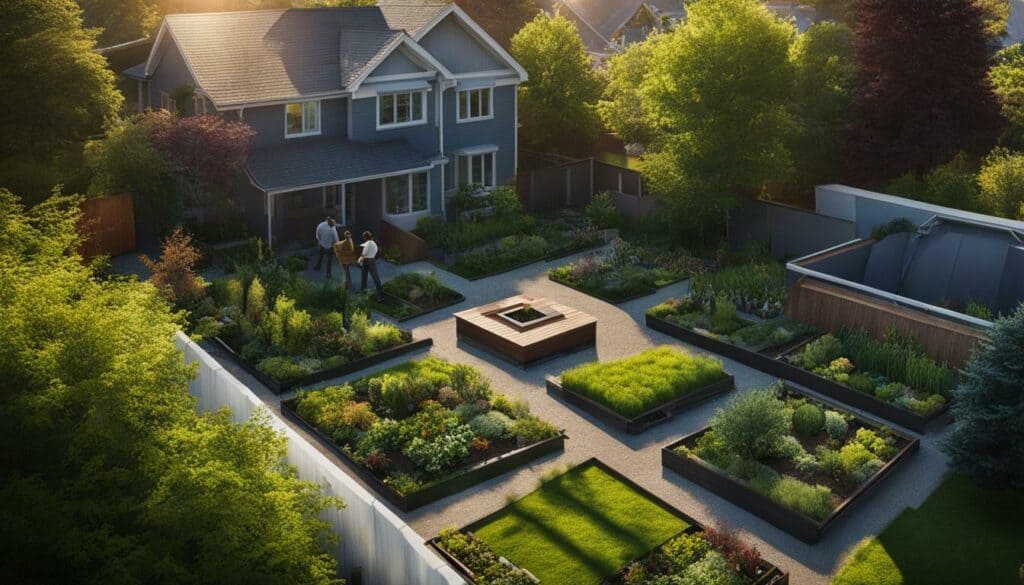
“Gardening is the art that uses flowers and plants as paint, and the soil and sky as canvas.” – Elizabeth Murray
Next Section: Removing Grass and Preparing the Soil
Removing Grass and Preparing the Soil
To prepare your backyard garden, you need to remove the grass and ensure the soil is in optimal condition for planting. This step is crucial for creating a healthy and productive garden. There are several methods you can use to remove the grass, and it’s important to choose the one that works best for your situation.
Methods for Removing Grass
- Removing Grass by Hand: One method is to remove the grass manually using a flat garden spade. This can be a physically demanding task, but it provides instant results and minimizes the growth of weeds. Simply slice through the roots of the grass about 1-2 inches below the sod or grass surface. This method is ideal if you have a small garden area or prefer a hands-on approach.
- Smothering Grass with Cardboard: Another option is to smother the grass using cardboard or newspaper. This method is less physically demanding and can be completed in just a few hours. Lay down a thick layer of cardboard or newspaper over the grass, ensuring complete coverage. This will block sunlight and prevent grass from growing. To hold the cardboard in place and provide additional benefits, such as weed suppression and moisture retention, add a layer of mulch or compost on top.
- Roto-Tilling: Using a rototiller is a popular method for removing grass and preparing the soil for gardening. This machine will break up the grass and turn over the soil. However, be aware that rototilling can bring many weed seeds to the surface, so additional tilling may be necessary to control weed growth. It’s important to avoid tilling when the soil is too wet, as it can lead to clumping and compaction.
- Sod Cutter: If you’re dealing with a large area of grass, renting a sod cutter may be a more efficient option. A sod cutter is a machine that slices through the grass and removes it in sections. This can save you time and effort compared to manual removal methods. However, keep in mind that renting a sod cutter may come with additional costs.
Choose the method that suits your needs and the size of your backyard garden. Consider factors such as the time, effort, and budget you can allocate for grass removal.
Preparing the Soil
Once the grass is removed, it’s time to prepare the soil for planting. Healthy soil is essential for the success of your garden and the growth of your plants. Here are some steps to follow:
- Soil Testing: Before making any amendments, it’s a good idea to test your soil to understand its pH level and nutrient content. Soil testing kits are available at gardening centers or through online retailers. They will provide you with valuable information about your soil’s composition and guide you in making the necessary adjustments.
- Amending the Soil: Based on the results of your soil test, you may need to amend the soil to improve its fertility and structure. Common amendments include adding organic matter such as compost, aged manure, or peat moss to enrich the soil and increase its water-holding capacity. You may also need to adjust the pH level if it is too acidic or alkaline by adding lime or sulfur as recommended by your soil test results.
- Tilling and Raking: Once you’ve added amendments, use a garden tiller or a rake to mix them into the soil thoroughly. This will help distribute the organic matter and nutrients evenly. It’s important to break up any clumps and remove large rocks or debris that may hinder plant growth.
- Apply Mulch: After preparing the soil, consider applying a layer of mulch around your plants. Mulch helps to conserve moisture, suppress weed growth, and regulate soil temperature. Organic mulches like straw, wood chips, or shredded leaves are excellent options.
By removing the grass and preparing the soil properly, you’ll create an ideal environment for your backyard garden to thrive. Your plants will have access to the nutrients they need, and their roots will be able to penetrate the soil easily. This sets the stage for a successful and bountiful garden.
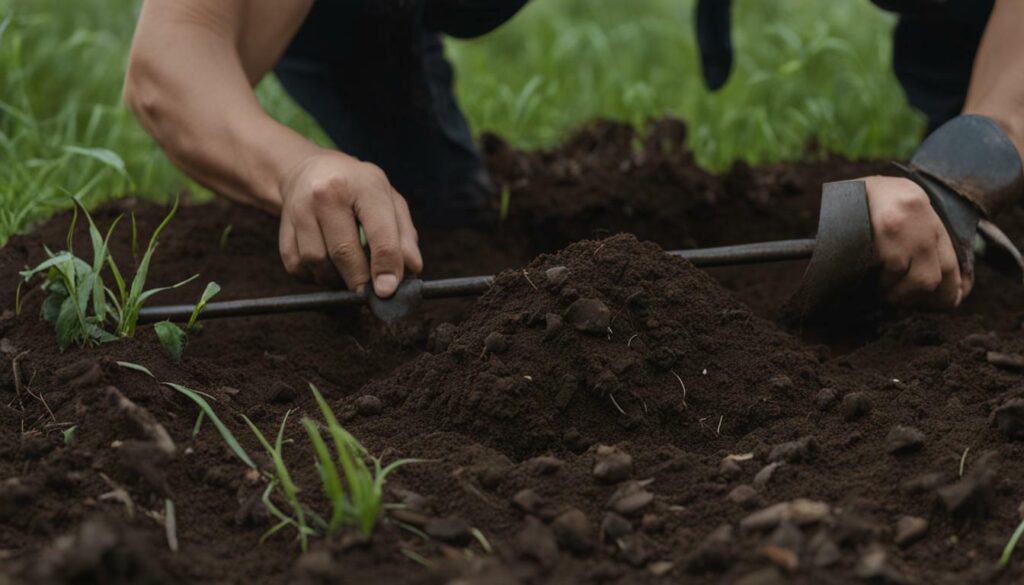
“To prepare your backyard garden, you need to remove the grass and ensure the soil is in optimal condition for planting.” – Source
Installing a garden fence is crucial to protect your plants from animals and ensure the success of your backyard garden. A fence serves as a physical barrier that keeps out deer, rabbits, and other critters that can damage or destroy your plants. It also adds a decorative element to your garden, enhancing its overall appearance.
When choosing a garden fence, consider the types of animals that are common in your area. If deer are a concern, opt for a fence that is at least 4 feet tall, as deer can jump up to 7 feet. For rabbits, a fence with a 2×2-inch grid or regular chicken wire that is at least 2 feet tall should suffice.
To install the fence, you will need a few tools and materials. Start by determining the perimeter of your garden and purchasing the appropriate amount of fencing. T-posts or U-posts are commonly used as the main support for the fence. Choose the type that suits your needs – T-posts are more rigid, while U-posts are easier to attach the fencing to.
To set the posts, drive them into the ground at intervals of about 10 feet. Make sure the corners are square by measuring the diagonals. You can use a sledgehammer or a fence post driver to secure the posts.
Once the posts are in place, attach the fencing to them using clips or tangs. Make sure the fencing is securely fastened and free of any gaps that animals can squeeze through.
Adding a garden gate is also a good idea for easy access to your garden. Choose a gate that matches the style of your fence and install it at a convenient location.
Remember to check with your local gardening experts or neighbors for advice on the best type of fencing for your specific area. They can provide valuable insights and recommendations based on their experiences.
Installing a garden fence not only protects your plants but also adds a decorative touch to your backyard garden. It creates a boundary that keeps out unwanted animals and allows you to fully enjoy the fruits of your labor. With the right fence in place, you can ensure the success of your backyard garden and reap the rewards of a bountiful harvest.

Once your backyard garden is prepared, it’s time to start planting your vegetable seeds or transplants. Whether you choose to start from seeds or buy young plants, here are some steps to help you get started:
1. Choose your seeds or transplants
Decide which vegetables you want to grow in your garden. Consider the climate and growing conditions in your area to ensure you choose plants that will thrive. You can purchase seeds or young plants from a local nursery or order them online. Make sure to choose varieties that are suitable for your region.
2. Prepare the soil
Before planting, make sure the soil is well-prepared. Remove any remaining grass or weeds and loosen the soil with a garden fork or tiller. Add compost or organic matter to improve the soil’s fertility and drainage. Smooth the soil surface with a rake, removing any large clumps or debris.
3. Determine plant spacing
Consult the seed packet or plant label for information on proper spacing. Different plants have different spacing requirements, so make sure to give each plant enough room to grow. Use a ruler or measuring tape to mark the spacing between rows and individual plants.
4. Plant seeds
For seeds, follow the instructions on the seed packet for planting depth and spacing. Use your finger or a small trowel to create holes for the seeds. Place one or two seeds in each hole and cover them with soil. Gently firm the soil around the seeds to ensure good contact.
5. Plant transplants
For young plants, dig a hole that is slightly larger than the root ball. Place the plant in the hole, making sure that the top of the root ball is level with the soil surface. Fill the hole with soil, firming it gently around the plant. Water the plant thoroughly to help it settle into its new home.
6. Water the garden
After planting, water the garden thoroughly to ensure that the soil is moist. Watering deeply encourages the roots to grow deeper into the soil. Use a watering can or hose with a gentle spray attachment to avoid disturbing the seeds or young plants.
7. Provide proper care
Once your vegetable garden is planted, it’s important to provide proper care. Monitor the soil moisture and water as needed, making sure not to overwater or underwater. Keep an eye out for pests or signs of disease and take appropriate measures to protect your plants. Regularly remove weeds to prevent competition for nutrients and sunlight.
8. Support and maintain
As your plants grow, provide support if necessary. Install stakes or trellises for vining plants like tomatoes or cucumbers to help them grow upright. Monitor the growth of your plants and adjust their support systems as needed. Prune and harvest regularly to promote healthy growth and ensure a bountiful harvest.
9. Enjoy the harvest
With proper care and maintenance, your vegetable garden will flourish and provide you with delicious homegrown produce. Enjoy the fruits of your labor and share your harvest with family and friends. There’s nothing more satisfying than enjoying a meal made from the vegetables you grew yourself!
Remember, gardening is a continuous learning process, so don’t be afraid to experiment and try new things. With time and experience, you will become a skilled gardener and enjoy the many benefits of growing your own food.
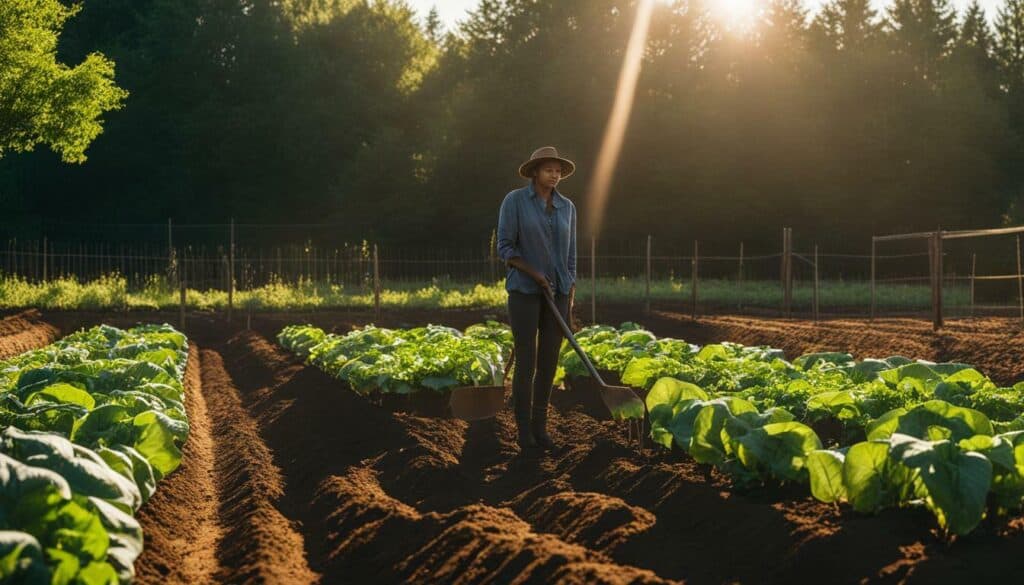
Sources:
- The Spruce: A Beginner’s Guide to Starting a Vegetable Garden
- NPR: Starting A Garden For The First Time? Here’s What You Need To Know
- Vegetable Gardening Online: Start a Vegetable Garden
Caring for Your Vegetable Garden
Proper care and maintenance are essential for the health and success of your backyard vegetable garden. By following a few key practices, you can ensure that your plants thrive and produce a bountiful harvest. Here are some important tips for caring for your vegetable garden:
1. Watering
Watering is crucial for the growth and development of your vegetable plants. It’s important to provide them with a consistent supply of moisture, especially during hot and dry periods. Aim to water deeply, ensuring that the water reaches the root zone. Avoid overhead watering, as it can lead to diseases and fungal issues. Consider using a drip irrigation system or watering at the base of the plants to minimize water waste and promote healthy growth.
2. Fertilizing
Proper fertilization is key to providing essential nutrients to your vegetable plants. Consider conducting a soil test to determine the nutrient levels and pH of your soil. Based on the results, you can choose the appropriate fertilizers or organic amendments to supplement any deficiencies. Apply fertilizers according to the recommended rates and timing for each type of vegetable. It’s important not to over-fertilize, as this can lead to nutrient imbalances and environmental pollution.
3. Pruning and Training
Some vegetable plants, such as tomatoes and cucumbers, benefit from pruning and training. Removing unnecessary branches and suckers helps improve airflow and reduces the risk of diseases. Additionally, training plants on trellises or stakes can save space and improve access for harvesting. Be sure to use proper pruning techniques and provide support structures early in the growing season to avoid damaging the plants.
4. Pest and Disease Control
Regular monitoring is essential for early detection and control of pests and diseases in your vegetable garden. Inspect your plants regularly, looking for signs of damage, pests, or unusual growth. Use organic pest control methods whenever possible, such as handpicking insects or introducing beneficial insects. If necessary, consider using organic pesticide options as a last resort, following the recommended application rates and guidelines.
5. Weed Management
Weeds compete with your vegetable plants for resources, such as nutrients and water. Implementing effective weed management practices is crucial for maintaining the health and productivity of your garden. Mulching around your plants can help suppress weeds and conserve moisture. Regularly hand-pull or hoe weeds to prevent them from spreading and robbing your plants of vital resources.
6. Harvesting
Knowing the proper time to harvest your vegetables is essential for maximizing their flavor and nutritional value. Each vegetable has specific maturity indicators, such as size, color, or firmness, that can guide you in determining when to harvest. Be sure to harvest regularly to encourage continuous production and prevent overripe or spoiled vegetables.
By following these care and maintenance practices, you can ensure the success of your backyard vegetable garden and enjoy a bountiful harvest throughout the growing season.
Additional Resources:
- Advice for First-Time Gardeners: Start Small
- Watering Vegetable Gardens
- Managing Pests in Vegetable Gardens
- Weed Control in Vegetable Gardens
- Harvesting Vegetables
“Proper care and maintenance are essential for the health and success of your backyard vegetable garden.” – University of Maryland Extension
General Tips for Backyard Gardening
Here are some general tips to help you make the most of your backyard garden and ensure a successful harvest.
Choose the Right Plants
When selecting plants for your garden, consider the climate, sunlight requirements, and available space. Choose plants that are well-suited to your local conditions and that you enjoy eating or using in your cooking.
Plan Your Garden Layout
Before planting, take the time to plan out the layout of your garden. Consider factors such as plant height, spacing, and companion planting. Create a rough sketch or use an online garden planner to visualize how your plants will be arranged. This will help optimize space and ensure proper air circulation and sunlight exposure for each plant.
Provide Adequate Watering
Watering is crucial for the health and growth of your plants. The frequency and amount of water needed will vary depending on the specific plants you are growing and the weather conditions. Keep an eye on the soil moisture and adjust your watering schedule accordingly. It’s important to water deeply and at the base of the plants to encourage strong root growth.
Mulch and Weed Regularly
Applying mulch to your garden beds helps retain moisture, regulate soil temperature, and suppress weed growth. Use organic mulch such as straw, wood chips, or compost. Mulching also adds valuable nutrients to the soil as it breaks down over time. Regularly remove weeds from your garden beds to prevent competition for nutrients and water.
Properly Feed and Fertilize
Providing your plants with the necessary nutrients is essential for healthy growth and high yields. Use organic fertilizers or compost to enrich the soil and promote soil fertility. Follow the recommended application rates and schedules for the specific types of plants you are growing.
Monitor and Control Pests
Keep a close eye on your plants for any signs of pests or diseases. Early detection and intervention can help prevent significant damage. Use organic pest control methods whenever possible, such as hand-picking insects, using insecticidal soaps, or introducing beneficial insects.
Harvest at the Right Time
Harvest your crops at the right time to enjoy maximum flavor and nutritional value. Each plant has different harvest guidelines, so familiarize yourself with the specific requirements for each type of vegetable or herb. Use a sharp knife or shears to harvest your produce, and be careful not to damage the remaining plants.
With these general tips, you’ll be well on your way to a successful backyard garden. Remember to experiment, learn from your experiences, and enjoy the process of growing your own food. Happy gardening!
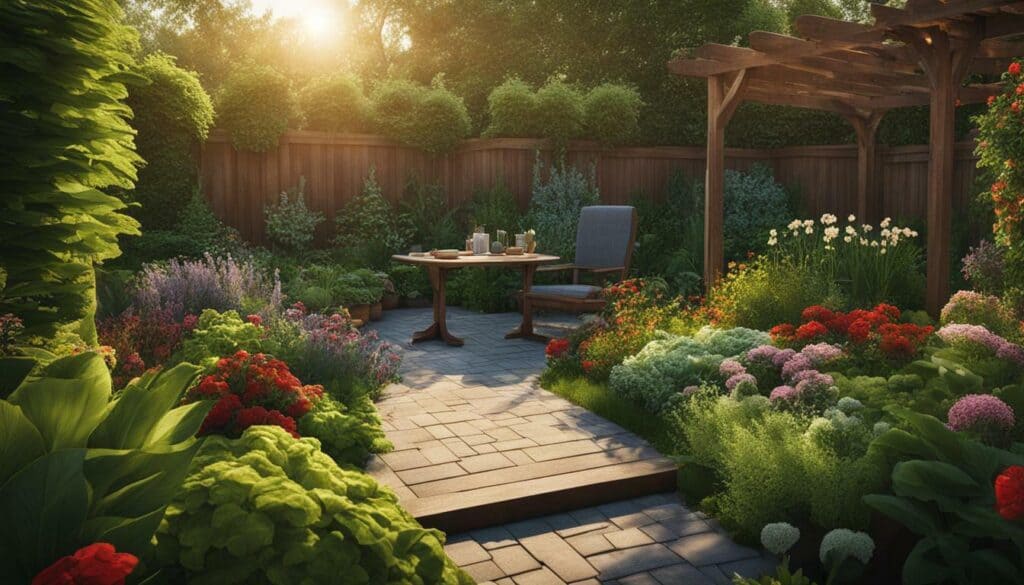
In Conclusion
In conclusion, creating a backyard garden can be a rewarding and fulfilling experience. By following this step-by-step guide, you can turn your outdoor space into a green haven and enjoy the pleasures of gardening.
Start by selecting the proper location for your garden, considering factors such as sunlight and access to water. Plan the size of your garden based on the vegetables you want to grow and your gardening capacity.
When removing grass and preparing the soil, consider options like hand removal or smothering with cardboard. Building a garden fence can help protect your garden from animals.
Once the soil is ready, you can start planting your vegetable garden using seeds or transplants. Make sure to space the plants properly and provide adequate watering and care.
Caring for your garden involves tasks such as watering, fertilizing, pruning, and pest control. It’s important to stay on top of these tasks to ensure the health and productivity of your plants.
Lastly, remember to follow general tips for successful backyard gardening, such as companion planting, organic gardening practices, and making the most of small spaces.
By following these steps and tips, you can create a thriving backyard garden that brings joy, beauty, and delicious homegrown vegetables to your life.
FAQ
Q: When is the best time to start a garden?
A: The best time to start a garden depends on your climate zone. If you live in a region with mild winters and hot summers, you can start earlier in the year. However, if you have cold winters and shorter summers, you’ll need to wait until the weather warms up.
Q: What are some DIY fertilizers I can use for my garden?
A: You can create your own fertilizer by composting food scraps or using ashes from burnt wood, which are high in phosphorous. Another option is to use urine, which is high in nitrogen.
Q: How can I keep my dog out of my garden?
A: The best way to keep your dog out of your garden is to install a fence that is too tall for them to jump over. Alternatively, you can tie your dog up using an appropriate length leash to prevent them from reaching the garden.
Q: Where can I find affordable gardening tools?
A: Thrift stores are a great place to look for affordable gardening tools and equipment. Additionally, some communities have programs that allow neighbors to share tools, which can save you money.
Q: What should I have in my gardening tool kit?
A: A gardening tool kit should include gardening gloves, a small spade, a watering can or hose, a shovel, a rake, string and stakes (optional), fertilizer or compost (optional), fencing supplies (optional), and a soil test kit (optional).
Q: What are some tips for keeping wild animals out of my garden?
A: If you see wild animals in your yard, it’s a good idea to erect a fence around your garden to keep them out. This will help protect your plants from being eaten or destroyed.
What Are the Basics of Gardening That I Need to Know for Making a Backyard Garden?
To create a flourishing backyard garden, familiarizing yourself with the joy of gardening basics is essential. Firstly, assess your space and select an area with sufficient sunlight. Prepare the soil by removing weeds and adding compost for nutrients. Choose appropriate plants based on your region and climate, considering factors such as sunlight and water requirements. Regular watering, timely pruning, and diligent pest control are essential for maintaining a healthy garden. Keep learning and experimenting with different plants to enhance your gardening journey and experience the joy of watching your garden thrive.

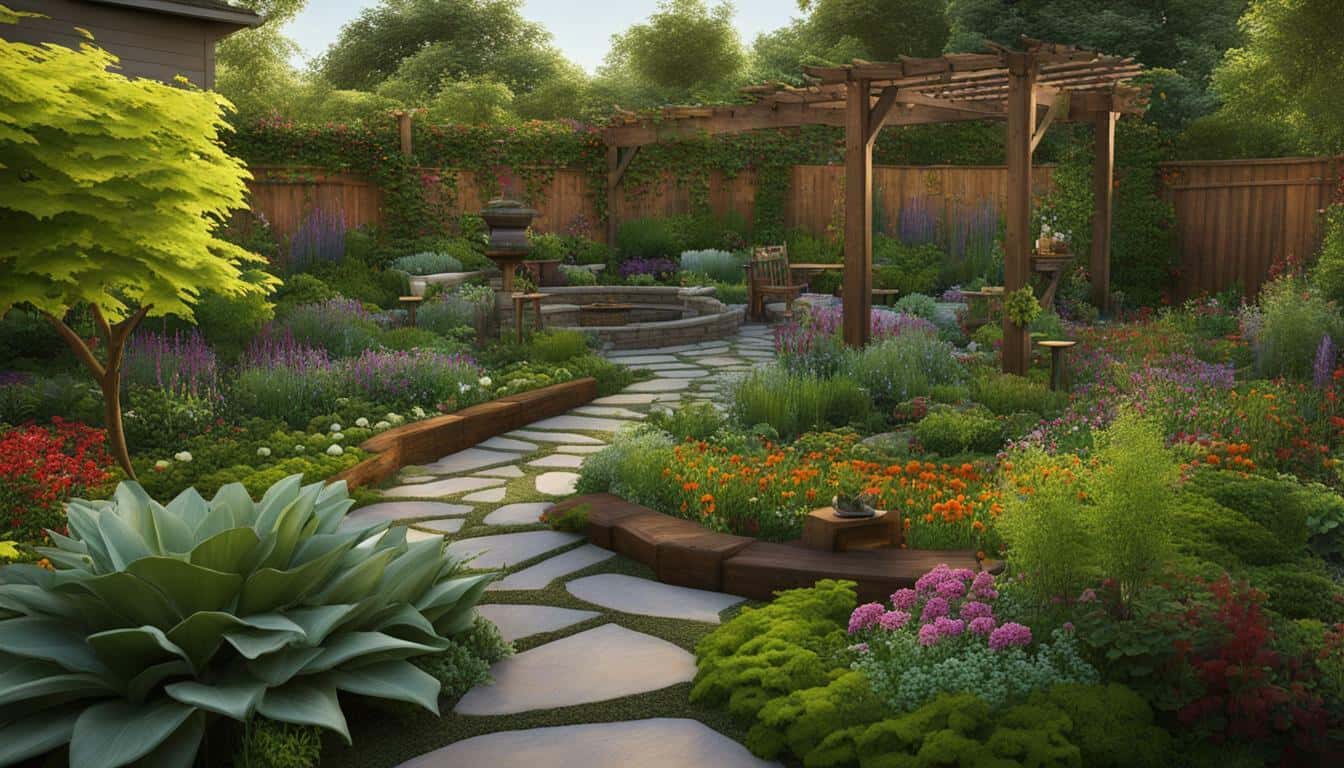



Leave a Reply